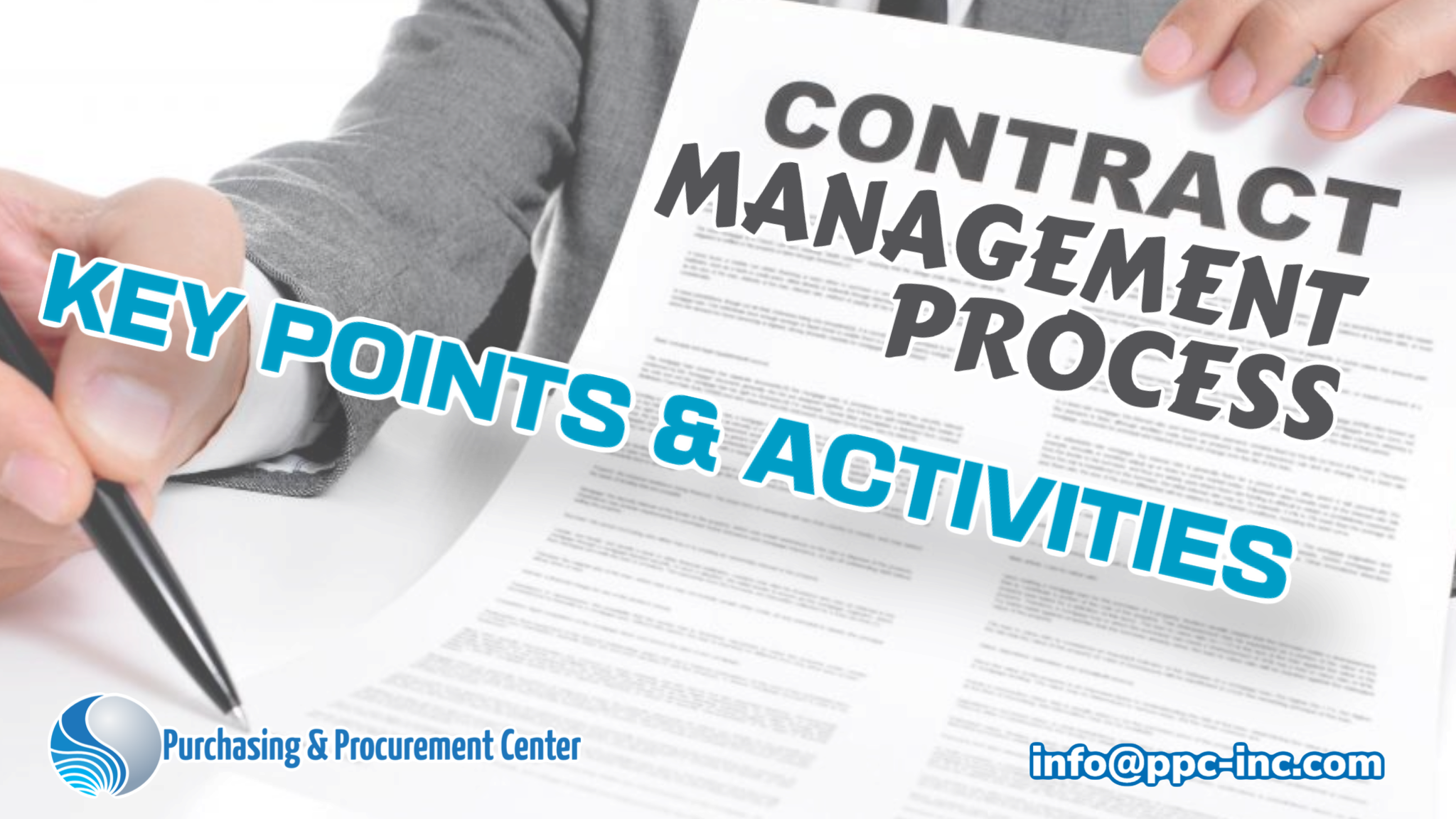
Contract Management Process – Key Points and Activities
The contract management process is the interaction between the vendor
and the purchaser that ensures that both parties meet their respective
obligations in any procurement relationship.
The aim is to meet the operational, functional and business objectives required by the contract and provide a profitable interaction.
The contract management process includes:
- Managing Service Delivery
To ensure that the products are delivered as and when they are ordered. - Managing the Relationship
This is the communications between the vendor and the purchaser. - Managing the Contract
This is the ongoing contract administration to ensure that the day-to-day procurement activities follow the spirit and sections of the contract. - Seeking Improvements
Improvements within a procurement environment mean greater efficiencies and an increase in profits. - Ongoing Assessment
The entire procurement activities are assessed on a continual basis to ensure that the contracts are adhered to and the purchasing processes followed. - Managing Change
In a long term procurement relationship, there are sometimes changes in activities, requirements or products available. All of these changes need to be noted and handled effectively.
Procurement contractural relationships are fundamental to the the ability of a company to deliver their services and/or provide products to their customers. If deliveries are late the company may be unable to service their customers.
Poor quality products reflect upon the company and their customers may go eleswhere. Problems can be expensive to solve and impact directly upon the success and profits of the purchasing company.
A thorough understanding of the contract management process and all that it entails are crucial to the success of a company. The key activities within a contract management process are:
- The purchasing company should possess a purchasing strategy that focuses on value for money and efficient procurement activities. All staff and vendors should be aware of these strategies and the resulting activities are required to follow them.
- Key Performance Indicators (KPI’s) should be in place with all vendors. These should be used to measure vendors’s performance as well as encourage them to reach for excellence.
- There should be a detailed master agreement in place with each vendor that details the expected performance and quality service that is to be delivered on a regular basis. This is a core requirement of any contract management process.
- Ongoing and regular monitoring of each vendor should be instigated and maintained. This can be undertaken by the installed software wherever possible. At the very least, delivery, prices, quality and exception handling should be monitored.
- Regular ad hoc tests as to service, product quality and communication should be undertaken and the actions taken on the results.
- Continual improvements of vendor/purchaser relationships should be undertaken.
- All potential risks should be identified and managed.
- All issues, exceptions and problems should be managed and escalated to the appropriate management level. They should all be resolved within an appropriate time frame.
- In the event of poor vendor performance, the appropriate remedies should be put into place in a timely manner. These might include financial penalties, training or removal of the supplier relationship.
The contract management process can be difficult but the rewards emanating from a profitably managed contract management process are potentially huge.
Return from contract management Process to What is Contract Management
Return from contract management process to Purchasing Procurement Center Homepage
